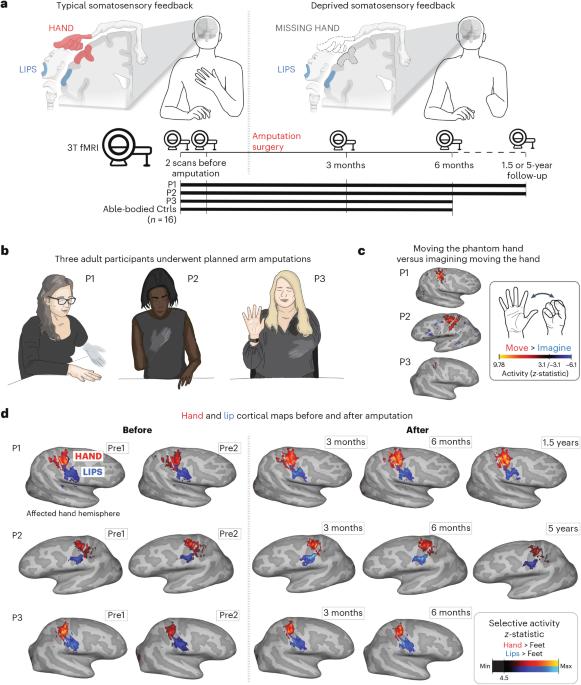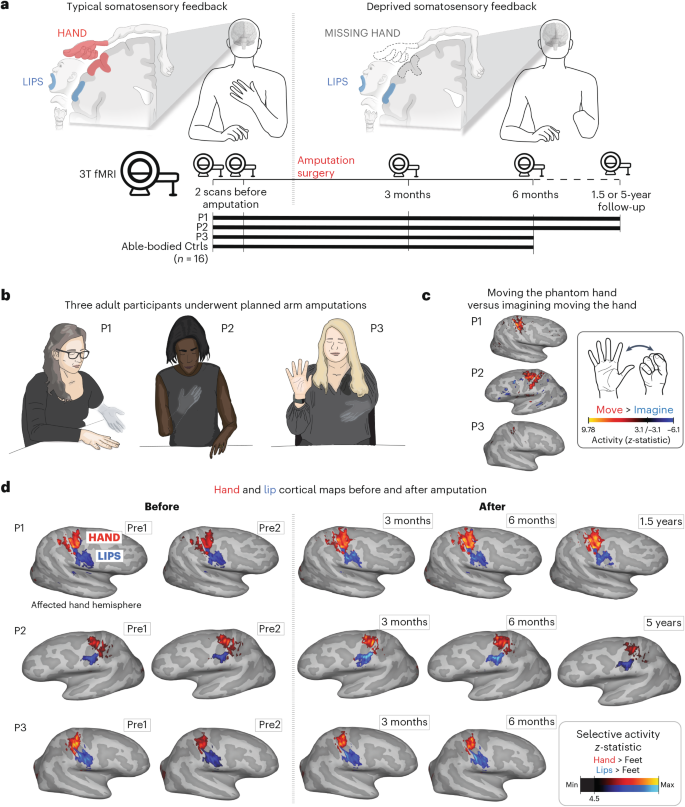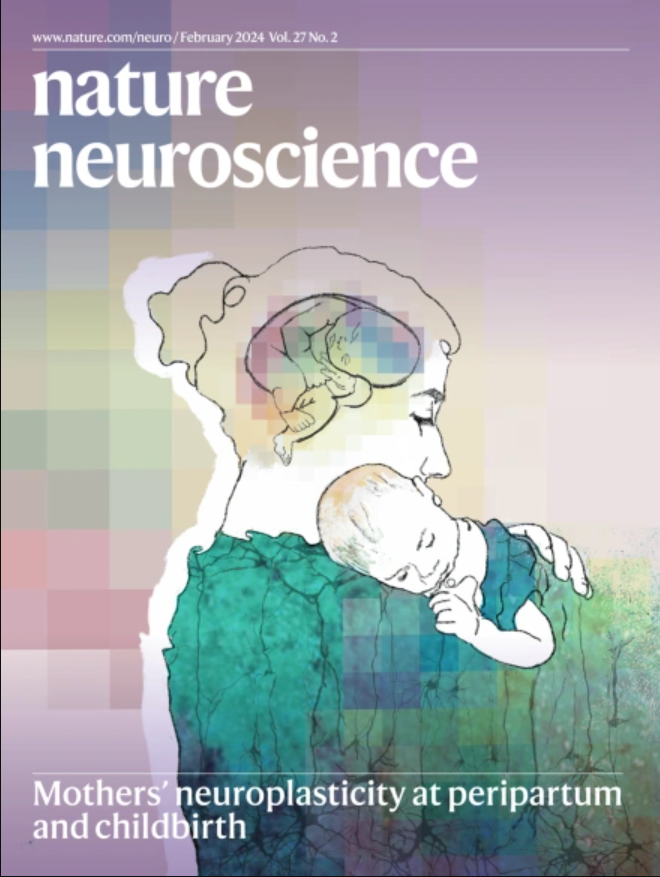Stable cortical body maps before and after arm amputation
IF 20
1区 医学
Q1 NEUROSCIENCES
引用次数: 0
Abstract
The adult brain’s capacity for cortical reorganization remains debated. Using longitudinal neuroimaging in three adults, followed before and up to 5 years after arm amputation, we compared cortical activity elicited by movement of the hand (before amputation) versus phantom hand (after amputation) and lips (before and after amputation). We observed stable cortical representations of both hand and lips in primary sensorimotor regions. By directly quantifying activity changes across amputation, we demonstrate that amputation does not trigger large-scale cortical reorganization. Longitudinal neuroimaging of participants with planned arm amputations shows that the cortical body map remains stable after amputation, with no evidence of hand or face reorganization, thus challenging long-standing theories of brain remapping after limb loss.


手臂截肢前后的稳定皮质体图
成人大脑皮层重组的能力仍然存在争议。我们对三名成人进行纵向神经成像,在截肢前和截肢后5年进行随访,比较了手(截肢前)与幻手(截肢后)和嘴唇(截肢前后)运动引起的皮质活动。我们观察到手和嘴唇在初级感觉运动区域的稳定皮层表征。通过直接量化截肢的活动变化,我们证明截肢不会引发大规模的皮层重组。
本文章由计算机程序翻译,如有差异,请以英文原文为准。
求助全文
约1分钟内获得全文
求助全文
来源期刊

Nature neuroscience
医学-神经科学
CiteScore
38.60
自引率
1.20%
发文量
212
审稿时长
1 months
期刊介绍:
Nature Neuroscience, a multidisciplinary journal, publishes papers of the utmost quality and significance across all realms of neuroscience. The editors welcome contributions spanning molecular, cellular, systems, and cognitive neuroscience, along with psychophysics, computational modeling, and nervous system disorders. While no area is off-limits, studies offering fundamental insights into nervous system function receive priority.
The journal offers high visibility to both readers and authors, fostering interdisciplinary communication and accessibility to a broad audience. It maintains high standards of copy editing and production, rigorous peer review, rapid publication, and operates independently from academic societies and other vested interests.
In addition to primary research, Nature Neuroscience features news and views, reviews, editorials, commentaries, perspectives, book reviews, and correspondence, aiming to serve as the voice of the global neuroscience community.
 求助内容:
求助内容: 应助结果提醒方式:
应助结果提醒方式:


